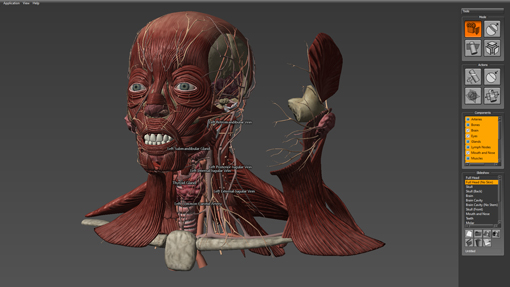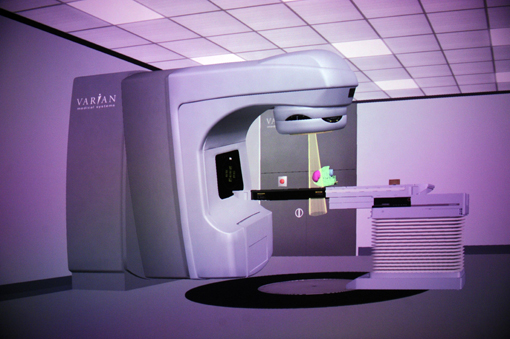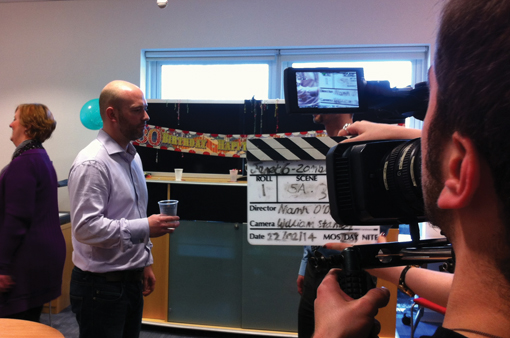The High Capacity Janet Network is supporting the use of UHD (Ultra High Definition) to enhance teaching, learning and research. Emma Smith, Video Projects Coordinator, Janet, conducts a grand tour.
About the author: Emma Smith is Video Projects Coordinator for Janet. Emma Smith has been working at Janet for the past 5 years as the Video Projects Coordinator within the Applications Development Team. Emma has worked on a variety projects including the BBC Super High Vision project and her current projects include working with the universities to deliver content to broadcasters and working with the Arts and Humanities sector to deliver masterclasses and simultaneous performances.
From its launch, thirty years ago, Jisc’s network, Janet, has supported the needs of the research (and later) teaching and learning communities, enabling them to push the boundaries of technology through a world-class network infrastructure. In the past few years the Applications Development team at Janet have been exploring ultra high definition (UDH) technology in order to understand the potential for how it could be used. This has resulted in a number of collaborative projects, with both national and international partners.
UHD (Ultra High Definition) collectively refers to displays with a 16 x 9 aspect ratio and a minimum resolution of 3,840 x 2,160 square pixels (from the definition as announced by The Consumer Electronics Association (CEA)). Recently, terms such as ‘4K’ (4,096 x 2,160) and ‘8K’ (7,680 × 4,320) have been discussed more widely, especially in the broadcast world.

(Image courtesy of The Scottish Ten & CDDV and The Digital Design Studio, Glasgow School of Art and NHS Education for Scotland)
The first step to investigating ultra high definition technology was to create a UHD Special Interest Group, which has now been running for several years. The group is made up of representatives from Janet, universities and broadcasters, with different members hosting each annual meeting.
The main aim of this group is to help shape the way in which UHD technology could be exploited over the Janet network. The group has achieved this by identifying issues relating to UHD applications, technical and technological challenges, processes and usability, for the use of ultra high definition within the community. This group enables members to discuss this area with others within the sector and encourages collaboration between members and their organisations.
A great example of collaboration is the UHD Showcase Project, which included project partners from the Digital Design Studio (as part of the Glasgow School of Art) and the Universities of Cardiff, Bristol and Strathclyde, and equipment on loan from the University of Essex.
This project aimed to demonstrate the possibilities available to universities and research organisations connected to such a high capacity network. By showing the potential for streaming UHD content over Janet, the community can see the potential for enhancing teaching and learning as well as its use for sharing resources and enabling future collaboration on a national and international scale.
… during surgery, doctors can stream such high-resolution imagery to university students, to enhance their training
By demonstrating these types of technology, we have found that members of the research and education sector can more easily see a real application for the technology. In comparison to, say, a simple presentation or technological discussion, showcasing the technology tends to leave members of the sector more enthused and inspired to use it for their own current and future projects.
Along with our partners, we delivered two UHD showcase events, which demonstrated the potential to stream ultra high definition content between geographically dispersed institutions, via the Janet network. Each location used a dedicated, layer 2 Lightpath connection, to deliver content between each site.
On 19 April 2013, Cardiff University hosted the first of the UHD Showcase events. Cardiff was able to demonstrate to a wider audience how they are already using ultra high definition technology to train radiography students using 3D virtual patients undergoing radiotherapy. Although currently only Cardiff University students are able to benefit from this training, the event streamed these images over Janet to the University of Bristol and PSNC (The Poznan Supercomputing and Networking Centre in Poland). This stream showcased the potential benefit of shared resources and expertise, as well as enabling students from multiple locations to expand their abilities by experiencing the procedure in a virtual world before treating actual patients.

The immersive, 3D virtual environment used to teach trainee radiographers to position a virtual patient and administer treatment
The second showcase event took place on 17 January 2014 at the Digital Design Studio, at Glasgow School of Art. Using around 300Mb/s, the event demonstrated how ultra high definition could also be used to digitally record world heritage sites for the future. In partnership with Historic Scotland and CyArk, the Digital Design Studio has meticulously scanned Scotland’s five World Heritage sites and four international sites, including Mount Rushmore (USA), Rani Ki Vav step well (India), The Eastern Qing Tombs (China) and Sydney Opera House (Australia), producing 3D, UHD models. On average, 2Tb of data is created from this technique, opening up a vast array of opportunities for future applications, ranging from tourism to architectural engineering.
In addition to this, just as with the previous event in Cardiff, the Digital Design Studio demonstrated a ground breaking medical platform, the 3D Head and Neck platform, developed in collaboration with the University of Glasgow Dental School and Department of Anatomy, the Centre for Health Science at Raigmore Hospital in Inverness, and funded by NHS Education Scotland. Deemed the world’s most accurate interactive 3D digital model of the human head and neck, this platform enables students to train in a safe and virtual environment, providing the ability to manipulate and view different parts of the anatomy.
… showcasing the technology tends to leave members of the sector more enthused and inspired
In July and August 2012 Janet collaborated with the BBC and NHK, the Japanese Public Broadcaster, on a project to broadcast the London Olympics to multiple national and international sites. Broadcast over the Janet network in SHV (Super Hi Vision), a term coined by NHK to describe 8K content, and using 22.2 channel audio, members of the public within the UK, were able to view live and pre-recorded Olympic content at 3 viewing sites (London, Bradford and Glasgow).
Using approximately 350Mb/s, this project allowed us to work closely with colleagues in other National Research and Education Networks around the world, and strengthened our relationship with the BBC. Although this project focused on the entertainment industry, it highlighted the need for a robust network capability in delivering high capacity content, which is used for a wide set of applications.
The most recent example of using UHD across the network, took place a few a weeks ago at our annual networking conference, Networkshop, which was held at the University of Leeds. At the previous year’s event, we demonstrated another technology, LOLA (LOw LAtency Audio Visual Streaming System), which allows musicians to perform simultaneously, in real time, at different locations. Due to the success of this demonstration and numerous members of the sector requesting access to the software, we decided to take the opportunity to demonstrate another technology – ultra high definition.
This demonstrative session took place during our closing plenary and was shown to over 300 delegates. Three different pieces of content were showcased, using multiple streaming solutions. The content shown included both live and pre-recorded material and an international stream from the Czech Republic.

Janet Showcase of Super Hi Definition technology during the London 2012 Games, in collaboration with the BBC and NHK in Japan.
The first of the three demonstrations was a dance performance inspired by the Greek myth, Narcissus. This five-minute piece, which was introduced by its director Dr George Rodosthenous, was performed on one side of the Leeds University campus, and viewed by the audience on the other side.
… Cardiff are already using ultra high definition technology to train radiography students using 3D virtual patients
This performance was streamed at a resolution of 3840 x 2160 @ 25 frames per second (fps) using Sony NXL-IP55 boxes. This hardware, along with the Sony F55 camera and the VW1000ES 4K projector, were kindly loaned to Janet for the purposes of this demonstration. The NXL-IP55 IP Production Unit allows for live, low latency content to be streamed between locations over IP networks, such as Janet. Although currently each box only allows for up to three HD outputs, by using two NXL-IP55’s as transmitters and two as receivers, Janet and Sony were able to split the UHD signal from the live feed into 4 HD signals, each representing one quarter of the overall image. At the receiver end (and using an additional HD signal as a reference point), the two NXL-IP55 receivers were able to join the 4 HD images back together to make a displayable, UHD live image.
Although the two campus locations were no more than about 100 to 150 metres away from each other, a dedicated 1Gb link was put in place on the local Leeds campus network. Approximately 500Mb/s was used during the performance.
MUDr. Petr Kala, head of the Interventional Cardiology Department at the Faculty Hospital Brno and RNDr. Petr Holub, Ph.D. from CESNET (the Czech Republic’s National Research and Education Network) provided the second part of the demonstration. MUDr Kala and RNDr Holub presented to delegates at the event, showing how they currently use ultra high definition within their hospital.
The Faculty Hospital Brno has been using UHD video for some time now, mainly within the angiology department. The hospital’s angiologists use an array of real-time examination tools such as X-ray, pressure measurement, or optical coherent tomography during operations. By presenting this vital content in UHD, angiologists are able to see images of the patient much clearer, giving a better view of the patients’ condition.

Student UHD film.
During surgery doctors can stream such high-resolution imagery to university students, to enhance their training. To stream, the Faculty Hospital Brno use open source software, called UltraGrid (www.ultragrid.cz), which has been developed by CESNET. This technology enables very high quality, low latency content to be transmitted over high-speed networks, such as CESNET and Janet.
As well as medical applications, UltraGrid is used within the arts and humanities sector for distributed musical and dance performance. The flexibility of UltraGrid enables support for various video standards from SD to native 4K, multiple operating systems (OSX, Linux, Windows) and multiple compressions, including MJpeg, H.264 and DXT. During this demo, Janet used MJpeg compression, using a Windows machine at 80Mb/s.
To conclude the technology demonstration at Networkshop this year, a group of Leeds University students produced an entertaining ten-minute video. Working with the university, and using the Sony FDR-AX1 camera, the students produced a short film on location. By loaning the equipment to Leeds University students to create this film, the student team was able to gain experience of using a new video standard, as well as working on an external client project. In return, we obtained a great example of UHD content, thanks to Leeds University staff, who provided expertise and helped the students to organise and produce the film in 3840 x 2160 @ 25fps, with stereo audio.
It is worth noting here that the Sony FDR-AX1 camera is freely available on a short loan basis, from Janet, to all organisations wishing to trial the technology. We also have several UltraGrid and LOLA nodes, which are available on short-term loans too, and we are keen to encourage and support organisations wishing to experiment with our equipment.
Throughout all of these projects it has become clear that many different academic areas are keen to explore ultra high definition, and understand how it can be applied within their area. We are committed to continuing support for research and educational organisations within the UK in this area. We are keen to investigate software and hardware available, in order to understand and inform those who seek our help. Through the Special Interest Group, members can collaborate on ideas and future projects as well as inspire others to explore this emerging technology. Our partners in other countries are also experimenting in this space, and the potential for wider international collaborations is widening. Through the few project examples described in this article and the clear drive in this technology, it is clear that the UK research and education sector is on its way to becoming leading experts in ultra high definition technology.
The Ultra High Definition Special Interest Group is open to anyone from the education or research sector that is interested in this area. If you are interested in joining the group and would like to attend the next meeting or would just like to know more about what Janet are doing in this area, or any of the technology mentioned in this article, please email: Emma.Smith@ja.net
Emma Smith
FURTHER READING
Technology takes medical research and training to a different dimension http://bit.ly/1t55R5H
Janet supports groundbreaking 3D digital Head and Neck platform http://bit.ly/1gywas9
Janet - at the forefront of technology http://bit.ly/1eKGEnO
For examples of other areas Janet have been involved in: http://bit.ly/1mdkv6U